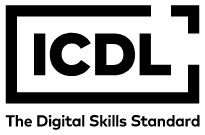A Recommender System for Virtual Cultural Heritage Tourism: Matrix Factorization and Collaborative Filtering Approach
Abstract
In the digital age, digital collection and recording technology can handle various types of tangible and intangible cultural heritage. Virtual tourism technology for cultural heritage has great potential in providing users with personalized experiences, but it also faces the problem of ignoring the personalized needs of different users. To this end, a user behavior classification model for cultural heritage virtual tourism technology and a cultural heritage virtual tourism recommendation model based on matrix factorization and coordinated filtering were developed. In the classification task, this study used Virtual Reality scene action data collected from HTC VIVO devices. In the recommendation task, MovieLens, Amazon-charts, ciao, and Epinions datasets were used. The findings denoted that the accuracy of the raised user behavior classification model was 85.47%, 94.62%, and 80.17% in the controller, head mounted display, and button data, respectively. In the mixed data source, the classification accuracy of the proposed model was 98.42%, and the F1 value was 97.74%. The Recall@20 of virtual tour recommendation model in MovieLens and Amazon-charts Dataset were 72.36% and 72.84%, respectively, with diversity values ranging from 0.7 to 0.9. On the Ciao dataset and Epinions dataset, the Root Mean Squared Error and Mean Absolute Error of the proposed model were 0.937 and 0.701, 1.033 and 0.796, respectively. The experimental results demonstrated that the proposed model improved classification and recommendation performance by innovatively combining additive attention mechanism, contextual multi-arm slot machine algorithm, and deep analysis of user behavior, surpassing standard matrix factorization and collaborative filtering methods. The research results help improve the display and service quality of cultural heritage virtual exhibition halls, effectively protect and inherit intangible cultural heritage, and promote the digital development of cultural resources.
Full Text:
PDFReferences
N. Raimo, I. De Turi, A. Ricciardelli and F. Vitolla, “Digitalization in the cultural industry: evidence from Italian museums,” in Int. J. Entrep. Behav. Res., vol. 28, no. 8, pp. 1962-1974, November 2022, DOI: 10.1108/IJEBR-01-2021-0082.
D. DeWitt, S. F. Chan and R. Loban, “Virtual reality for developing intercultural communication competence in Mandarin as a Foreign language,” in Educ. Technol. Res. Dev., vol. 70, no. 2, pp. 615-638, April 2022, DOI: 10.1007/s11423-021-10074-9.
J. Li, “Impact of Metaverse cultural communication on the mental health of international students in China: highlighting effects of healthcare anxiety and cyberchondria,” in Am. J. Health Behav., vol. 46, no. 6, pp. 809-820, December 2022, DOI: 10.5993/AJHB.46.6.21.
M. Melo, H. Coelho, G. Gonçalves, N. Losada, F. Jorge, M. S. Teixeira and M. Bessa, “Immersive multisensory virtual reality technologies for virtual tourism: A study of the user’s sense of presence, satisfaction, emotions, and attitudes,” in Multimed. Syst., vol. 28, no. 3, pp. 1027-1037, June 2022, DOI: 10.1007/s00530-022-00898-7.
X. Wu and I. K. W. Lai, “The use of 360-degree virtual tours to promote mountain walking tourism: Stimulus–organism–response model,” in Inf. Technol. Tour., vol. 24, no. 1, pp. 85-107, March 2022, DOI: 10.1007/s40558-021-00218-1.
T. Yang, W. Ruan, Y. Li and S. Zhang, “Virtual tourist motivation: the differences between virtual tourism and on-site tourism,” in Tour. Rev., vol. 78, no. 5, pp. 1280-1297, September 2023, DOI: 10.1108/TR-07-2022-0331.
Y. Zeng, L. Liu and R. Xu, “The effects of a virtual reality tourism experience on tourist’s cultural dissemination behavior,” in Tour. Hosp., vol. 3, no. 1, pp. 314-329, March 2022, DOI: 10.3390/tourhosp3010021.
M. A. Bretos, S. Ibáñez-Sánchez and C. Orús, “Applying virtual reality and augmented reality to the tourism experience: a comparative literature review,” in Span. J. Mark.-ESIC, vol. 28, no. 3, pp. 287-309, July 2024, DOI: 10.1108/SJME-03-2023-0052.
T. H. Cham, G. Wei-Han Tan, E. C. X. Aw, K. B. Ooi, T. W. Jee and C. K. Pek, “Virtual reality in tourism: adoption scepticism and resistance,” in Tour. Rev., vol. 79, no. 2, pp. 337-354, February 2024, DOI: 10.1108/TR-10-2022-0479.
J. Chen, X. Xin, X. Liang, X. He and J. Liu, “GDSRec: Graph-Based Decentralized Collaborative Filtering for Social Recommendation,” in IEEE Transactions on Knowledge and Data Engineering, vol. 35, no. 5, pp. 4813-4824, May 2023, DOI: 10.1109/TKDE.2022.3153284.
V. R. Yannam, J. Kumar, K. S. Babu and B. Sahoo, “Improving group recommendation using deep collaborative filtering approach,” in Int. J. Inf. Technol., vol. 15, no. 3, pp. 1489-1497, March 2023, DOI: 10.1007/s41870-023-01205-x.
H. Papadakis, A. Papagrigoriou, C. Panagiotakis, E. Kosmas and P. Fragopoulou, “Collaborative filtering recommender systems taxonomy,” in Knowl. Inf. Syst., vol. 64, no. 1, pp. 35-74, January 2022, DOI: 10.1007/s10115-021-01628-7.
F. Fkih, “Similarity measures for Collaborative Filtering-based Recommender Systems: Review and experimental comparison,” in J. King Saud Univ.-Comput. Inf. Sci., vol. 34, no. 9, pp. 7645-7669, October 2022, DOI: 10.1016/j.jksuci.2021.09.014.
R. Widayanti, M. H. R. Chakim, C. Lukita, U. Rahardja and N. Lutfiani, “Improving recommender systems using hybrid techniques of collaborative filtering and content-based filtering,” in J. Appl. Data Sci., vol. 4, no. 3, pp. 289-302, 2023, DOI: 10.47738/jads.v4i3.115.
T. Anwar, V. Uma, M. I. Hussain and M. Pantula, “Collaborative filtering and kNN based recommendation to overcome cold start and sparsity issues: A comparative analysis,” in Multimed. Tools Appl., vol. 81, no. 25, pp. 35693-35711, October 2022, DOI: 10.1007/s11042-021-11883-z.
E. D’Amico, G. Gabbolini, C. Bernardis and P. Cremonesi, “Analyzing and improving stability of matrix factorization for recommender systems,” in J. Intell. Inf. Syst., vol. 58, no. 2, pp. 255-285, April 2022, DOI: 10.1007/s10844-021-00686-1.
A. Sankari, S. Masih and M. Ingle, “Exploring Matrix Decomposition Methods for Recommender Systems,” in J. Sci. Res., vol. 16, no. 3, pp. 705-712, September 2024, DOI: 10.3329/jsr.v16i3.70831.
X. Xu, “Multimedia VR image improvement and simulation analysis based on visual VR restructuring algorithm,” Informatica, vol. 48, no. 1, pp. 107-118, 2024, DOI: 10.31449/inf.v48i1.5368.
T. Yu, C. Lin, S. Zhang, C. Wang, X. Ding, H. An, X. Liu, T. Qu, L. Wan, S. You, J. Wu and J. Zhang, “Artificial intelligence for Dunhuang cultural heritage protection: the project and the dataset,” in Int. J. Comput. Vis., vol. 130, no. 11, pp. 2646-2673, January 2022, DOI: 10.1007/s11263-022-01665-x.
S. N. Amin, P. Shivakumara, T. X. Jun, Chong Yang, Zan D. Leong Lon and R. Rahavendra, “An Augmented Reality-Based Approach for Designing Interactive Food Menu of Restaurant Using Android,” in Artif. Intell. Appl., vol. 1, no. 1, pp. 26-34, November 2023, DOI: 10.47852/bonviewAIA2202354.
Y. Zhang, Y. Gao, Z. Zhao, “Research on Operation and Anomaly Detection of Smart Power Grid Based on Information Technology Using CNN+ Bidirectional LSTM,” Informatica, vol, 49, no. 7, pp. 157-164, 2025, DOI: 10.31449/inf.v49i7.7037.
A. S. Gaafar, J. M. Dahr, A, K. Hamoud, “Comparative analysis of performance of deep learning classification approach based on LSTM-RNN for textual and image datasets,” Informatica, vol, 46, no. 5, pp. 21-28, 2022, DOI: 10.31449/inf.v46i5.3872.
D. Soydaner, “Attention mechanism in neural networks: where it comes and where it goes,” in Neural Comput. Appl., vol. 34, no. 16, pp. 13371-13385, August 2022, DOI: 10.1007/s00521-022-07366-3.
Z. Chen, L. Zhang, J. Sun, R. Meng, S. Yin and Q. Zhao, “DCAMCP: A deep learning model based on capsule network and attention mechanism for molecular carcinogenicity prediction,” in J. Cell. Mol. Med., vol. 27, no. 20, pp. 3117-3126, July 2023, DOI: 10.1111/jcmm.17889.
C. Su, Z.S. Zhu. Research on non-legacy creative design based on shadow play elements. Advanced Management Science, 2023, 12(1).
L. Brunke, M. Greeff, A. W. Hall, Z. Yuan, S. Zhou, J. Panerati and A. P. Schoellig, “Safe learning in robotics: From learning-based control to safe reinforcement learning,” in Annu. Rev. Control, Robot. Auton. Syst., vol. 5, no. 1, pp. 411-444, May 2022, DOI: 10.1146/annurev-control-042920-020211.
C. Wu, Y. Zhu, R. Zhang, Y. Chen, F. Wang and S. Cui, “FedAB: Truthful Federated Learning with Auction-Based Combinatorial Multi-Armed Bandit,” in IEEE Internet Things J., vol. 10, no. 17, pp. 15159-15170, 1 September 2023, DOI: 10.1109/JIOT.2023.3264677.
T. Yang, S. Gao, J. Li, M. Qin, X. Sun, R. Zhang, M. Wang and X. Li, “Multi-Armed Bandits Learning for Task Offloading in Maritime Edge Intelligence Networks,” in IEEE Trans. Veh. Technol., vol. 71, no. 4, pp. 4212-4224, April 2022, DOI: 10.1109/TVT.2022.3141740.
F. O. Isinkaye, “Matrix factorization in recommender systems: algorithms, applications, and peculiar challenges,” in IETE J. Res., vol. 69, no. 9, pp. 6087-6100, 2023.
N. Van Dat, P. Van Toan and T. M. Thanh, “Solving distribution problems in content-based recommendation system with gaussian mixture model,” in Appl. Intell., vol. 52, no. 2, pp. 1602-1614, January 2022, DOI: 10.1007/s10489-021-02429-9.
L. Wu, J. Li, P. Sun, R. Hong, Y. Ge and M. Wang, “DiffNet++: A Neural Influence and Interest Diffusion Network for Social Recommendation,” in IEEE Transactions on Knowledge and Data Engineering, vol. 34, no. 10, pp. 4753-4766, 1 October. 2022, DOI: 10.1109/TKDE.2020.3048414.
DOI: https://doi.org/10.31449/inf.v49i30.8236

This work is licensed under a Creative Commons Attribution 3.0 License.









